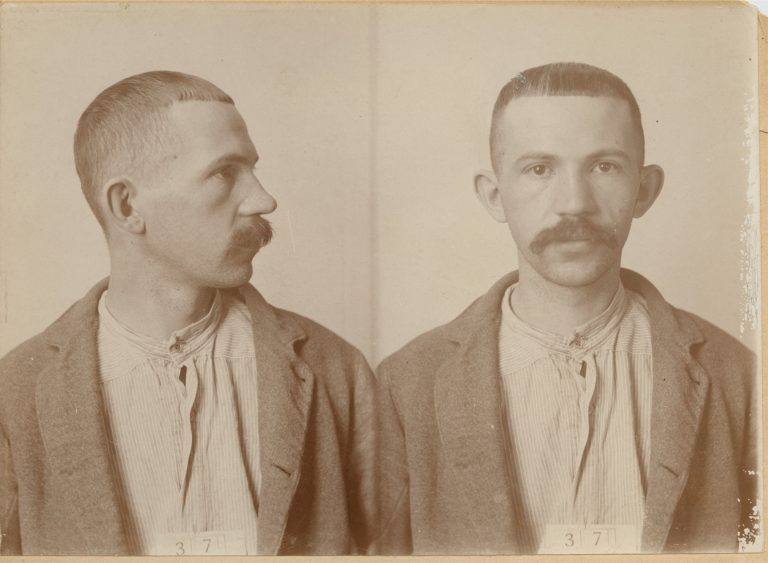Reimund Holzhey robbed stagecoach and train passengers in northern Michigan and Wisconsin during the late 1880s. His downfall began on August 26, 1889, when he stopped a stagecoach between Gogebic Station and Lake Gogebic. In the process of robbing it, he shot Adolph G. Fleischbein, an Illinois banker traveling on summer vacation. Fleischbein was taken to Bessemer where he died the next day. A massive manhunt ensued, but Holzhey proved hard to find. Three months later, a local sheriff, a justice of the peace and a hotel proprietor captured him in Republic, Michigan.
A jury convicted Holzhey of murder in the fall of 1889. He received a life sentence and was sent to Marquette prison. As an inmate, he caused endless problems. His transgressions included attempting to escape, taking hostages, and going on a hunger strike. Holzhey also suffered from blackouts, dizziness and seizures, prompting the Warden to transfer him to Ionia Prison and Hospital on November 20, 1893.The events at Ionia are debated, but several newspaper articles reported that Holzhey underwent surgery related to a childhood brain injury. What is not debated is Holzhey’s transformation when he returned to Marquette Prison on July 24, 1894. Marquette prison officials described Holzhey as a model prisoner. He developed a passion for reading and photography and became the prison photographer. He also worked as the prison librarian and editor of the prison newspaper.
On advice from James Russell, the warden of Marquette, Michigan Governor Fred W. Warner commuted Holzhey’s life sentence in 1910. After his discharge in 1913, Holzhey worked in northern resorts as a guide and photographer for a few years. In 1917, he went to Yellowstone National Park, where he took photos to sell to tourists. By 1932, he was living on Captiva Island off the coast of Florida. On September 26, 1952, he committed suicide after a long illness. Reimund Holzhey’s story is fascinating. You can read more about it in the Research Notes of Lemmer and Chaput Collection (1889-1976) at the Archives of Michigan. The collection contains correspondence, including first-hand accounts of the manhunt and capture of Holzhey, as well as newspaper articles and photographs.
Victor F. Lemmer researched the Holzhey story in the 1950s while writing an article for the publication Michigan History. Lemmer then gave the research records to Donald Chaput, a commissioner with the Michigan Historical Commission in the 1970s. Mr. Chaput continued to research Holzhey and donated the products of the joint research to the Archives of Michigan in 1989 (Manuscript Collection 89-17).
This article originally appeared in the Summer/Fall 2018 issue of Trace, the Archives of Michigan magazine.





